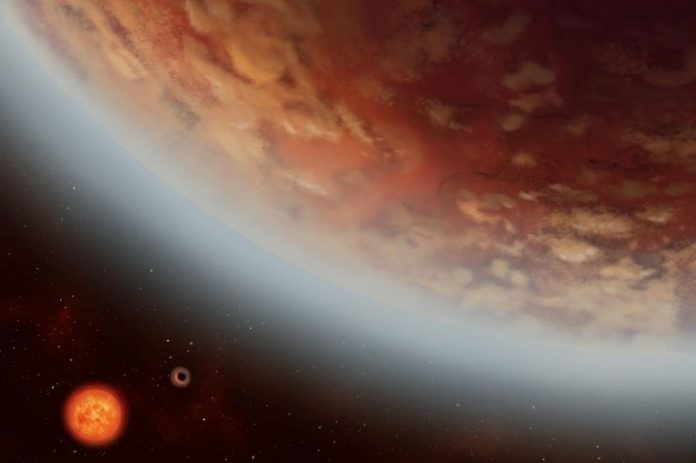A rocky planet orbiting a red-dwarf star just 111 light years away could harbour alien life, scientists claim.
The planet, orbiting a star known as K2-18 in the constellation Leo, is described as a “Super-Earth” – a scaled-up version of our own planet.
Researchers have found that a super-Earth in the habitable zone of its star might be a larger version of our own planet.
It was first discovered back in 2015 when scientists found that it was orbiting every 33 days in the star’s habitable zone, which means it could have liquid water. It was found via the transit method, seeing the dip in the star’s light as the planet passed in front of it.
Now, using the High Accuracy Radial Velocity Planet Searcher (HARPS) on the European Southern Observatory’s La Silla Observatory in Chile, the team was able to work out the radius and mass of the planet.
They found that the planet has about 8 times the mass of Earth and is about 2.3 times bigger. This gives it a density that suggests it’s either a rocky planet with a gaseous atmosphere, or an ocean planet with an icy shell. They don’t know for sure at the moment, but hope that future telescopes will provide an answer.
“With the current data, we can’t distinguish between those two possibilities,” Ryan Cloutier, the study’s lead author, said in a statement. “But with the James Webb Space Telescope (JWST) we can probe the atmosphere and see whether it has an extensive atmosphere or it’s a planet covered in water.”
The statement added that “K2-18b could well be a scaled-up version of Earth.”
In their paper, the researchers note this system is one of the best for further study, as this red dwarf star is the second brightest with a transiting planet known, behind LHS 1140b.
“Because of the brightness of its host star and the low bulk density of K2-18b, the system offers a unique opportunity to study super-Earth atmospheres receiving Earth-like insolation in the JWST-era,” the researchers wrote.
This wasn’t the only exciting discovery they made, either. They also discovered a second planet in the system, dubbed K2-18c. It’s also thought to be a super-Earth, but orbits the star in just nine days. Being much closer, it’s likely to be hot and not habitable.
But it’s exciting nonetheless. And this system goes to show just how exciting the era of exoplanet astronomy is going to be, as we study worlds like and unlike our own.















